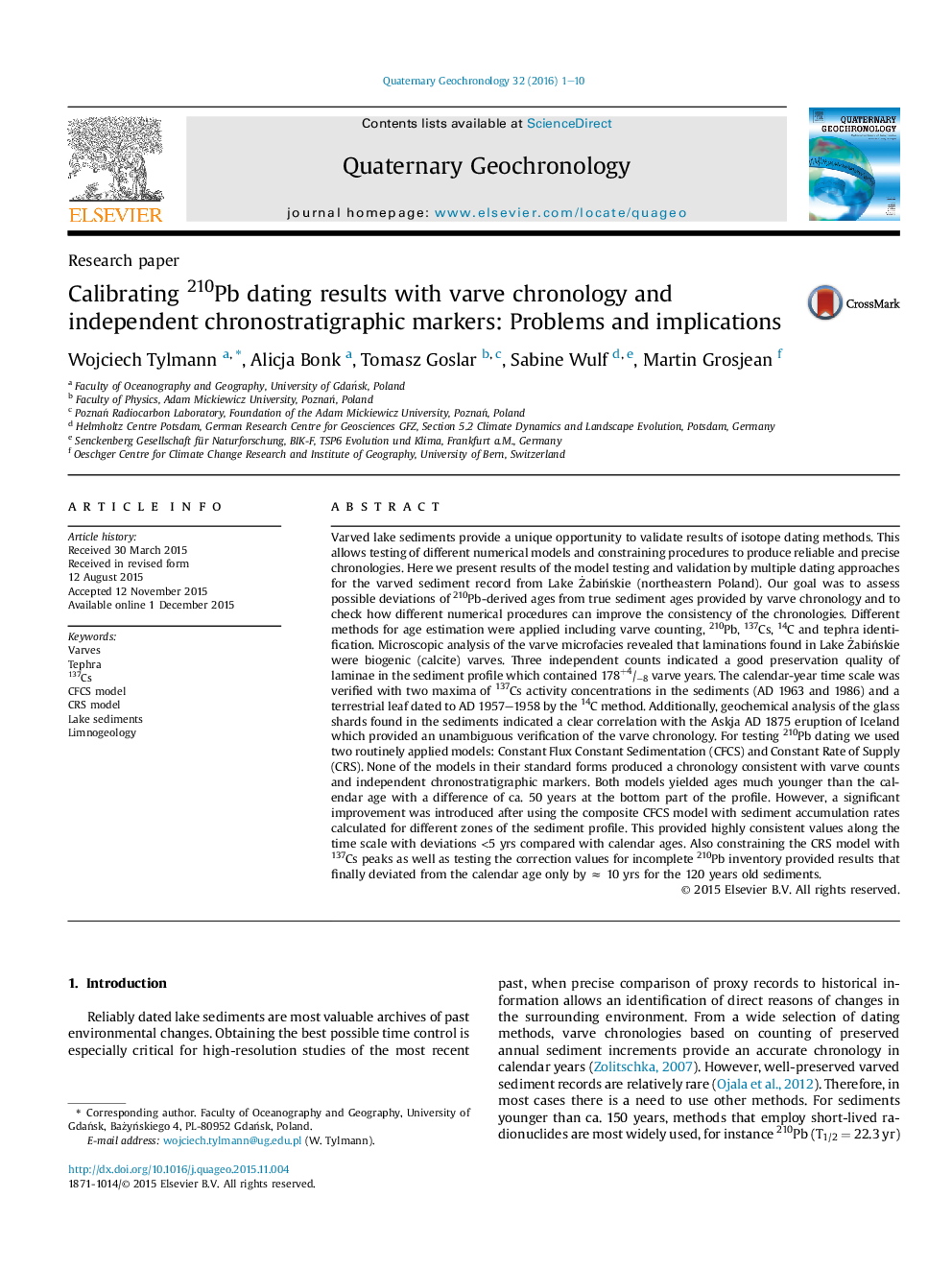| کد مقاله | کد نشریه | سال انتشار | مقاله انگلیسی | نسخه تمام متن |
|---|---|---|---|---|
| 4724838 | 1639844 | 2016 | 10 صفحه PDF | دانلود رایگان |
• We investigate a varved sediment core from Lake Żabińskie in northeastern Poland.
• The age-depth model compares ages form varves, tephra, 14C, 137Cs and 210Pb.
• We test most commonly used models for 210Pb dating: CFCS and CRS.
• Discrepancies might occur when using simple CFCS or unconstrained CRS dating models.
• Numerical procedures can improve consistency between 210Pb models and varve age.
Varved lake sediments provide a unique opportunity to validate results of isotope dating methods. This allows testing of different numerical models and constraining procedures to produce reliable and precise chronologies. Here we present results of the model testing and validation by multiple dating approaches for the varved sediment record from Lake Żabińskie (northeastern Poland). Our goal was to assess possible deviations of 210Pb-derived ages from true sediment ages provided by varve chronology and to check how different numerical procedures can improve the consistency of the chronologies. Different methods for age estimation were applied including varve counting, 210Pb, 137Cs, 14C and tephra identification. Microscopic analysis of the varve microfacies revealed that laminations found in Lake Żabińskie were biogenic (calcite) varves. Three independent counts indicated a good preservation quality of laminae in the sediment profile which contained 178+4/−8 varve years. The calendar-year time scale was verified with two maxima of 137Cs activity concentrations in the sediments (AD 1963 and 1986) and a terrestrial leaf dated to AD 1957–1958 by the 14C method. Additionally, geochemical analysis of the glass shards found in the sediments indicated a clear correlation with the Askja AD 1875 eruption of Iceland which provided an unambiguous verification of the varve chronology. For testing 210Pb dating we used two routinely applied models: Constant Flux Constant Sedimentation (CFCS) and Constant Rate of Supply (CRS). None of the models in their standard forms produced a chronology consistent with varve counts and independent chronostratigraphic markers. Both models yielded ages much younger than the calendar age with a difference of ca. 50 years at the bottom part of the profile. However, a significant improvement was introduced after using the composite CFCS model with sediment accumulation rates calculated for different zones of the sediment profile. This provided highly consistent values along the time scale with deviations <5 yrs compared with calendar ages. Also constraining the CRS model with 137Cs peaks as well as testing the correction values for incomplete 210Pb inventory provided results that finally deviated from the calendar age only by ≈ 10 yrs for the 120 years old sediments.
Journal: Quaternary Geochronology - Volume 32, April 2016, Pages 1–10
